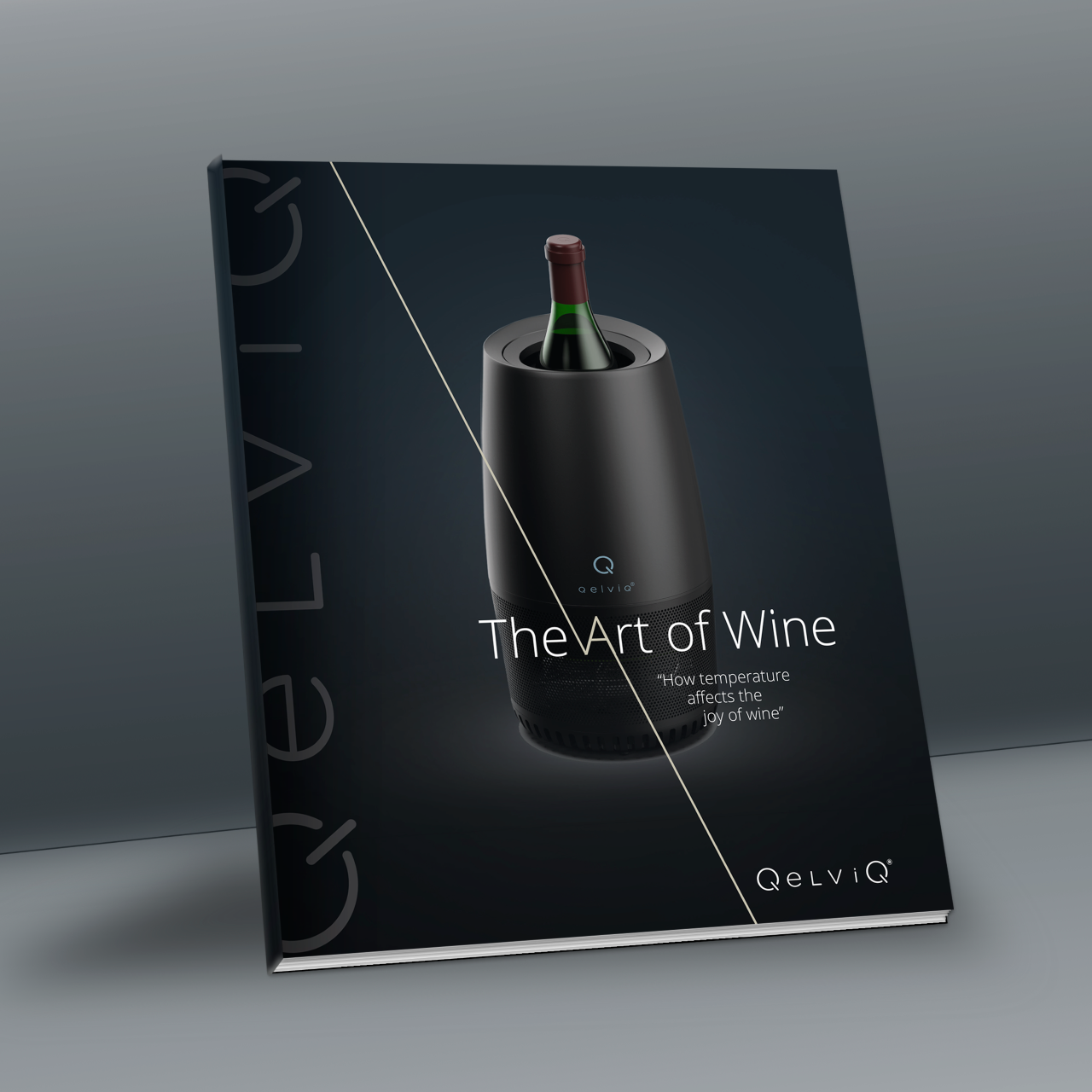Wine Blunders from the Homo Non Sapiens
Even though the ideal serving temperature remains the decisive factor that determines the final quality-in-our-glass of a wine, there are still a number of other points of attention that need to be adressed. Wrong choices or wrong behaviors that negatively affect the taste pleasure and drinking experience. We list three of the most frequent wine blunders. Unfortunately, they are a worldwide occurrence among wine lovers.
Blunder 1 : The use of dysfunctional glasses
Even in professional circles (in this case: many restaurants) they still use totally wrong wine glasses. Fortunately, we have passed the time when people thought it was ‘chic’ to serve wine in a colored glass.
For example, many restaurants and wine enthusiasts tend to use smaller ‘goblet glasses’ for white wine, while reserving the larger sizes for red wine. However, a beautiful white cru has the same right to a full glass with a sufficiently large chalice (so that the bouquet can develop smoothly), to a rather thin and slender glass quality (so that we have a nice mouth touch), but also sufficient stem plus sturdy foot.
At the other extreme you find the ‘aquarium-sized’ glasses that are sometimes seen in restaurants for red wine: real vases in which you would rather put cut flowers than wine. Moreover due to their size and the ultra long stem these glasses are very difficult to drink from and makes it nearly impossible to enjoy the wine.
For champagne and related bubbles such as prosecco, crémant or cava, stubborn “enthusiasts” still use the totally dysfunctional ‘coupe’. That is a glass form that, in practice, turns out to be a bubble killer because the CO2 needs a downwardly tapered glass shape. Otherwise the carbonation can not develop. In short, the ‘coupe’ is often more show than functionality.
Even the more elegant and festive-looking ‘flute’, which is still dominant and indeed appears to be more adequate than the old ‘coupe’, is gradually losing ground. More and more professionals serve their champagne in a tulip-shaped, traditional-looking wine glass. What can be minimally lost by this tulip glass to bubbles and carbonation, is maximally gained in aromatic expression and flavor richness. The sparkling wine can breathe much better in a tulip glass.

Blunder 2: Death by cuddling
Even when a perfectly functional glass is on the table - glasses that have also been carefully washed and dried, so that they do not smell like cupboard, cardboard, detergent or soap - millions of amateurs worldwide make the same mistake: they completely mishandle their wine glass.
Instead of grabbing it at the bottom of the handle, it seems as if they are afraid that their glass will be stolen. They claw it with their entire palm, so that the calyx disappears in their fist. Especially during a walking dinner or an aperitif in the garden, when the glasses are often held quite a long time, this glass-in-the-night treatment ensures a quick warming of the content. Be- cause the temperature of the human body hovers around 37 °C/98°F ,that bodily heat is transferred to the glass at lightning speed.
After so much effort of the host/hostess to serve the wine at the correct temperature, a cuddled wine will raise 3°C/5°F to 5°C/9°F in no time. And really change the character of the wine.
Blunder 3: Decanting on autopilot
Decanting, namely the meticulous pouring of a wine into a (preferably crystal) decanter, is very popular in some circles and in specific circumstances is also of practical use. The decanter functions as a time machine.
Young, yet powerful wines from a recent millésime get an accelerated oxygen bath. Because of the oxidation, the still closed aromas will be released somewhat easier and the sometimes firm tannins will be slightly matted. This increases the drinkability.
If older, mature cuvées are involved - bottles that have already had a long cellar sleep - the usefulness of decanting consists mainly in separating the depot (sediment) from the wine. Because even though this natural sediment is absolutely harmless, it turns out to be far from pleasant to have these leftovers in your mouth when savoring the wine.
However, it is wrong to automatically force every young or old wine into the decanter. Many supporters of this method are particularly charmed by the high show content of this decanting ritual. The slow pouring of a bottle, with or without a candle as a light source, in a beautiful cut decanter, naturally impresses the guests.
But decanting without thought and in all circumstances is also a risk, especially for very old harvest years. The texture and structure of these ‘older rascals’ have often become fragile due to the ripening process. I experienced several times that an overly enthusiastic host without consultation or foreknowledge automatically decanted a ripe cru 12 hours in advance. Result? At the time that the wine was tasted, this old wine had unfortunately already been largely tapped, fatally tired by the forced oxygen bath. This is not an absolute rule, however : some wines benefit effectively from a long stay in the decanter. And then gain in aroma and taste relief through this treatment. The lesson that we can draw from this? Experiment. Get to know your bottles, cuvées and harvests. But do not decant all your bottles without distinction.
If there are any unexpected guests popping up or you have doubts about the ‘muscle strength / fragility’ of the wine you want to serve, then proceed with the following ritual in which the pre-testing is central.
Step 1: uncork your bottle one hour before you go to the table and taste a few sips in a functional wine glass of a ‘normal’ size.
Step 2: if it concerns a young wine that is still very tannic, muscular and even very ‘oaky’, pour a little into a glass with a wider cup size. And look (smell, taste) if he opens up a bit more after some powerful rolling. With an old wine, or the change in glass size, make sure that the wine effectively wins ‘finesse’ or ‘complexity’, or rather quickly loses its attraction.
Step 3: If the cru remains stubborn, powerful and closed, then use the decanter. After all, then it is not a matter of pure show, but a must.

Wine lover? Want to learn even more? Download your FREE 64 page e-book!

"Hi l am Wim, sommelier, and wine enthusiast just like you! My fellow sommeliers understand the importance of serving wine at the correct temperature. They know that if wine is too warm, it will lose its flavors and complexities, and if wine is served too cold, it will numb your taste buds. A few world renown sommeliers and myself will explain this further, and share some interesting (taste) case studies."
